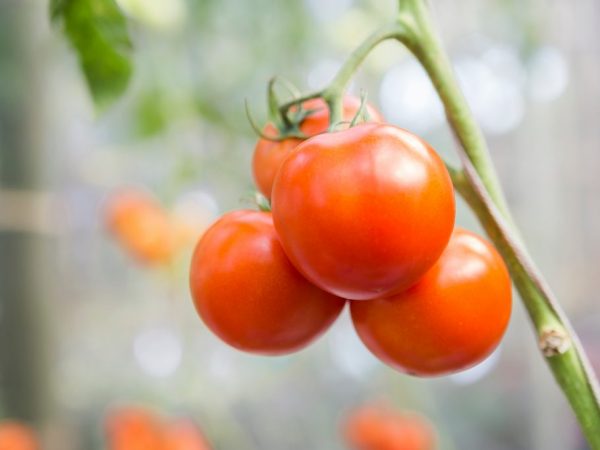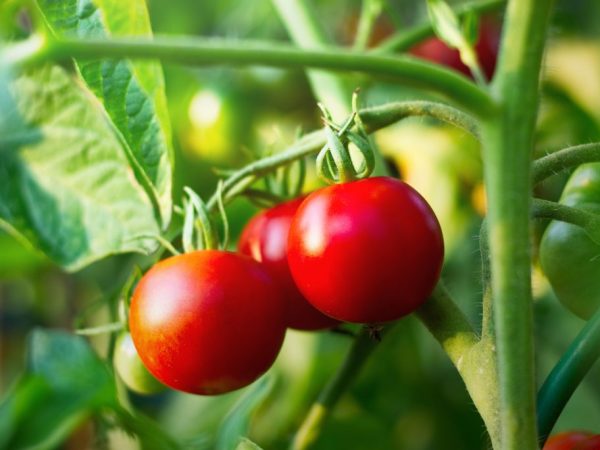Characteristics of the tomato variety Solerosso F1
Tomato Solerosso F1 is very popular among gardeners and vegetable lovers. The breeders tried to develop such a hybrid that would be high-yielding, had tasty and healthy fruits, and was also not whimsical to growing conditions.

Characteristics of the tomato variety Solerosso F1
The Solerosso tomato belongs to the early maturing varieties. Its tomatoes are characterized by excellent taste, beautiful appearance and high commercial quality. These fruits can be eaten fresh or pickled, they are perfect for making salads, snacks or dressings. Tomatoes can also be added to soups, borscht, hot dishes, and even make delicious tomato juice out of them.
Characteristic
The hybrid unique Tomato Solerosso F1 quickly spread around the world, receiving positive consumer reviews. The variety appeared by crossing different biotypes. It can be grown in different climatic zones, but the most suitable is a warm and temperate climate.
This early variety is able to bear fruit three months after sowing the seeds. It rightfully deserves the title of "promising crop", as its general characteristic is one of the best among many other types of tomatoes. The variety is popular not only among summer residents and farmers, but also among large producers in the food industry.
Description of the variety
The Solerosso variety has many advantages, among which are high yields, early maturity, delicious tomatoes, resistance to almost all diseases and weather changes, good transportability, as well as the compactness of the bushes, which do not take up much space on the site. The shortcomings of this crop have not been identified by breeding specialists and experienced farmers through study and observation.
Hybrid refers to determinant plants, that is, those that have limited growth. Usually it is grown either outdoors or under a film. Tomatoes of this variety lend themselves well to mechanized processing. After collection, they are able to be stored and retain their properties for forty days at a temperature of 18-20 degrees Celsius.
The variety is very stress-resistant, so the bushes will grow even during periods of prolonged rains or when the constant temperature drops sharply. If in your region the summer climate is not hot and the nights are cold, then it is better to insulate the tomatoes with portable greenhouses at this time of day. This will help you increase the yield of your crop. With proper care of tomatoes, about eight kilograms of fruit can be obtained from one square meter.
Description of the bush
The bushes of this variety of tomatoes are undersized. On average, they grow up to 60 centimeters, they are characterized by stable growth. Thanks to their small size, Solerosso tomatoes can be grown even on the balcony. Their bushes are moderately spreading, with an average amount of green mass. Tomato leaves are usually small, dark green in color.
On the branches of the bush, first inflorescences appear, and then the tomatoes themselves. Fruits grow in clusters, each with five to six pieces. Since the bushes of tomatoes are small, when the fruits ripen, the stems can bend due to a strong load.
Description of fruits
The characteristics of the fruits of this variety in some points coincide with the description of other tomatoes. The shape of Solerosso tomatoes is round, slightly flattened. The fruits are small in size, the weight of one tomato is usually within 60 grams. Their skin is thin, but dense, due to which the fruits do not crack, even overripe, and do not deteriorate so easily under the influence of external factors.
When the tomatoes are ripe, they become a deep red, solid color without any spots. Internally, the fruits are divided into six seed chambers, which are similar to walnut kernels. A slight ribbing can be observed at the fruit stem. The pulp of tomatoes is juicy, but not watery, medium in density. They are very pleasant to taste, sweet, sour notes are practically not felt.

The fruits of the plant are very useful
Tomatoes ripen together after about 95 days from the moment the sprouts appear. These vegetables are not only beautiful in appearance, but also very healthy. They contain trace elements necessary for the human body. These substances prevent cell aging, help the intestines work efficiently, strengthen blood vessels, and also reduce the risk of atherosclerosis and tumors.
Growing seedlings
Solerosso tomatoes are grown using seedlings, which is typical for hybrid varieties. The process of growing this crop contains several stages:
- first you need to purchase planting material of this variety;
- then the seeds are planted;
- after the emergence of sprouts, you need to provide them with proper care, which includes feeding, watering and protection from external factors;
- at the next stage, seedlings are planted and taken care of in compliance with all agricultural standards;
- the harvesting process ends.
In order to get a high yield, you need to know the features of the Solerosso variety and the rules for its cultivation. A detailed description of this process will be discussed below.
Planting seeds
Sowing of seeds takes place in early March. The best way to germinate seeds is to place them in special peat tablets or seedling containers with prepared nutrient soil, which contains humus or peat. You can add growth stimulants to the temporary soil. Do not disinfect seeds before planting, as they have already been treated by the manufacturer and are completely ready for use.
If you want to use peat tablets, then you will need to soak them and place each seed in a separate tablet. In this case, the seeds will need to be pre-treated with drugs that stimulate growth. If you are going to plant seeds in a seedling box, then you need to prepare a nutritious substrate. To do this, you need to mix garden soil with humus, river sand and peat.
Tip: for the plant to receive quality nutrition, it is recommended to add a little wood ash to the prepared potting mix. It contains calcium, magnesium and other nutrients. Properly prepared soil will retain moisture and allow air to pass through easily. It is light and resembles earth in composition.
Before planting the seeds, the soil can be moistened with a solution of potassium permanganate. Planting material should be planted 1.5-2 centimeters deep. Sprinkle the ground with peat on top, water it well and cover with a film. After that, containers with seeds are placed in a warm and well-lit place for 5-6 days.
Sprout care
When the first shoots appear, the plastic wrap can be removed and the container with the seedlings can be placed in a place that is well lit by sunlight.According to experts, young seedlings will be strong only in conditions of abundant timely watering and adherence to the correct thermal regime. The most suitable temperature is 23-25 degrees. Water the sprouts with warm, settled water when the top layer of the earth dries up.
Two weeks before transplanting seedlings to garden beds, it must be hardened. To do this, every day a container with sprouts is taken out into fresh air for a couple of hours. This method will help young bushes to strengthen, quickly adapt to the external environment and easier to cope with transplanting to a permanent place.
Transplanting
You can plant young seedlings in open ground at the age of two months. The earth will already be warmed up, and the temperature will stabilize. Sometimes prolonged cold and bad weather make it impossible to transplant seedlings into the garden in time. There is nothing wrong with this: the Solerosso tomatoes will take root well even if flowers begin to grow on them or the first ovary is formed. Young fruits will remain on the bushes after transplanting.
The soil for planting seedlings is prepared in the fall. The earth must be dug up and fertilized with rotted humus or compost. Particular attention should be paid to the acidity of the soil, it should not exceed 6.5 pH. With increased acidity, plants are difficult to vegetate. You can add phosphorus to the ground, since it is difficult to wash out and remains in the ground for a long time.
Before planting seedlings, the soil must be well watered. No more than three bushes can be planted on one square meter. In the early days, it is better to cover the tomatoes with foil. It is important that the soil under the tomatoes is always loose and free from weeds. For better growth and a good harvest, plants must be watered with warm water in a timely manner, fed with organic substances and protected from pests.
A place in the garden for tomatoes should be chosen on a hill, well-lit and ventilated. You do not need to plant them in a low-lying area where rainwater accumulates. It is allowed to plant tomatoes in a place where legumes, cabbage, carrots or onions used to grow. You should not grow tomatoes in beds where potatoes or corn were the predecessors.
Diseases and prevention
Diseases of tomatoes and root rot occur due to the appearance of excess vegetation near the bushes, such as weeds. The most common disease in Solerosso tomatoes is fungus. Other diseases affecting nightshade are not terrible for this variety, including late blight. Dangerous pests for this culture are aphids, bear or naked slugs.
To prevent the appearance of putrefactive bacteria, you need to constantly loosen the ground, thereby destroying the weeds.
You can spray the bushes with a weak solution of potassium permanganate. To combat aphids, an aqueous solution of laundry soap is used, with slugs - water with the addition of ammonia, and a decoction of celandine will help get rid of the bear.
Conclusion
The characteristic of the variety states that Solerosso tomatoes have many positive qualities that distinguish them from other tomato varieties. High yield, easy care, early tasty and healthy fruits - this is only a small part of the description of the advantages of this variety. You should definitely try growing these amazing tomatoes at least once.


